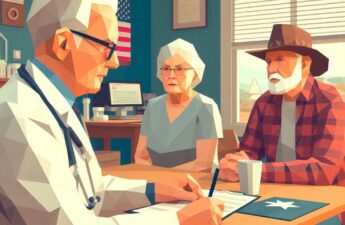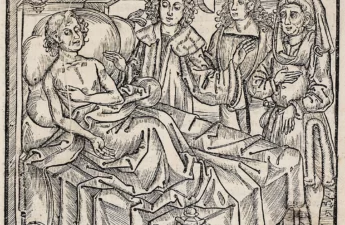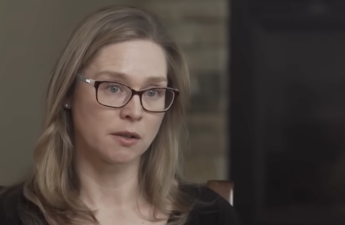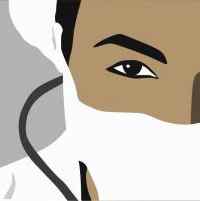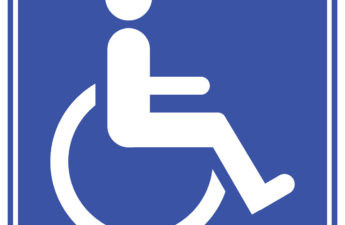Category: Doctors
Doctor shortages have hobbled health care for decades − and the trend could be worsening
For decades, experts have warned of an impending decline in the physician workforce. Now, Americans across all regions, specialties and socioeconomic backgrounds are experiencing that decline firsthand or personally.
Generative AI and deepfakes are fuelling health misinformation.
Here’s what to look out for so you don’t get scammed
Retired Doctors Step Up in the Face of a Rural Health Care Crisis
By Pat Raia, The Daily Yonder March 11, 2025 Four years ago, family practitioner Dr. Jeff Chappell retired from his post as medical director of the Wayne Community Health Center in Bicknell, Utah. He was excited to undertake a new…
‘A scarlet letter’: States aim to end stigma of doctors seeking mental health care
More than 40% of physicians, as well as medical school students and residents, cite fear of disclosure requirements on licensure forms as a main reason why they don’t seek mental health care.
Lawmaker proposes turning Evergreen State College into UW Health Sciences campus
The bill, if passed, would do away with The Evergreen State College.
Why seeing the same doctor could save your life
A review examining 1.4 million patients worldwide found that those who do not see the same doctor regularly are more likely to die within a certain period. This consistent relationship with a doctor is known as “continuity of care”.
Many of the benefits of this approach probably stem from the fact that doctors accumulate knowledge about an individual patient, which they then use in subsequent consultations to tailor advice.
Do implicit bias trainings on race improve health care?
There is increasing evidence that implicit bias – non-conscious attitudes toward specific groups – is a source of racial inequities in certain aspects of health care, and lawmakers are taking note.
The ‘doctor of nursing practice’ will see you now
Amid a shortage of doctors and an explosion in the number of nurse practitioners with doctorates, many nursing groups are pushing to expand what nurses can do without physicians’ supervision. Physicians, meanwhile, are pushing to keep nurse practitioners and physician assistants under their oversight, arguing that giving more autonomy to providers with less rigorous training could put patients at risk.
Modern medicine has its scientific roots in the Middle Ages
How the logic of vulture brain remedies and bloodletting lives on today
Doctors Emerge as Political Force in Battle Over Abortion Laws in Ohio and Elsewhere
Doctors who previously never mixed work with politics are jumping into the abortion debate by lobbying state lawmakers, campaigning, forming political action committees and trying to get reproductive rights protected by state law.
In the “Wild West” of Outpatient Vascular Care, Doctors Can Reap Huge Payments as Patients Risk Life and Limb
To move vascular procedures out of expensive hospitals, the government turbocharged payments to doctors’ offices. Instead of saving money, it started a boom that is making doctors rich and putting patients in danger.
After Idaho’s Strict Abortion Ban, OB-GYNs Stage a Quick Exodus
Later this month, the hospital, founded in 1949 near the shores of Lake Pend Oreille, will stop providing services for expectant mothers, forcing patients across northern Idaho to travel at least an additional hour for care. In June, a second Idaho hospital, Valor Health, in the rural city of Emmett, will also halt labor and delivery services. Those decisions came within months of Idaho’s abortion ban, one of the nation’s strictest.
Unconscious biases continue to hold back women in medicine, but research shows how to fight them and get closer to true equity and inclusion
Implicit bias is any unconscious negative attitude a person holds against a specific social group. These unconscious biases can affect judgment, decision making and behavior. Implicit bias is often one of the underlying issues that leads to discriminatory practices or harassment that diversity, equity and inclusion policies are meant to address.
Doctors Are Disappearing From Emergency Rooms as Hospitals Look to Cut Costs
This staffing strategy has permeated hospitals, and particularly emergency rooms, that seek to reduce their top expense: physician labor. While diagnosing and treating patients was once their domain, doctors are increasingly being replaced by nurse practitioners and physician assistants, collectively known as “midlevel practitioners,” who can perform many of the same duties and generate much of the same revenue for less than half of the pay.
For Many Disabled Patients, the Doctor Is Often Not In
In one study, only 56 percent of doctors strongly welcomed patients with disabilities into their practice. Less than half were confident or very confident that they could provide the same quality of care to people with disabilities as they could to other patients.

